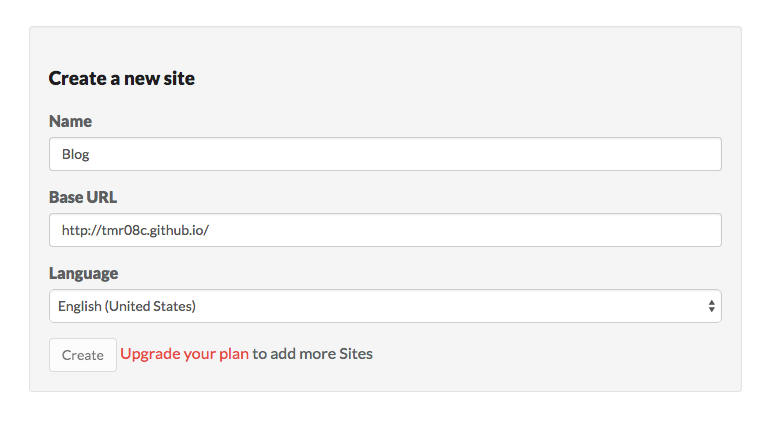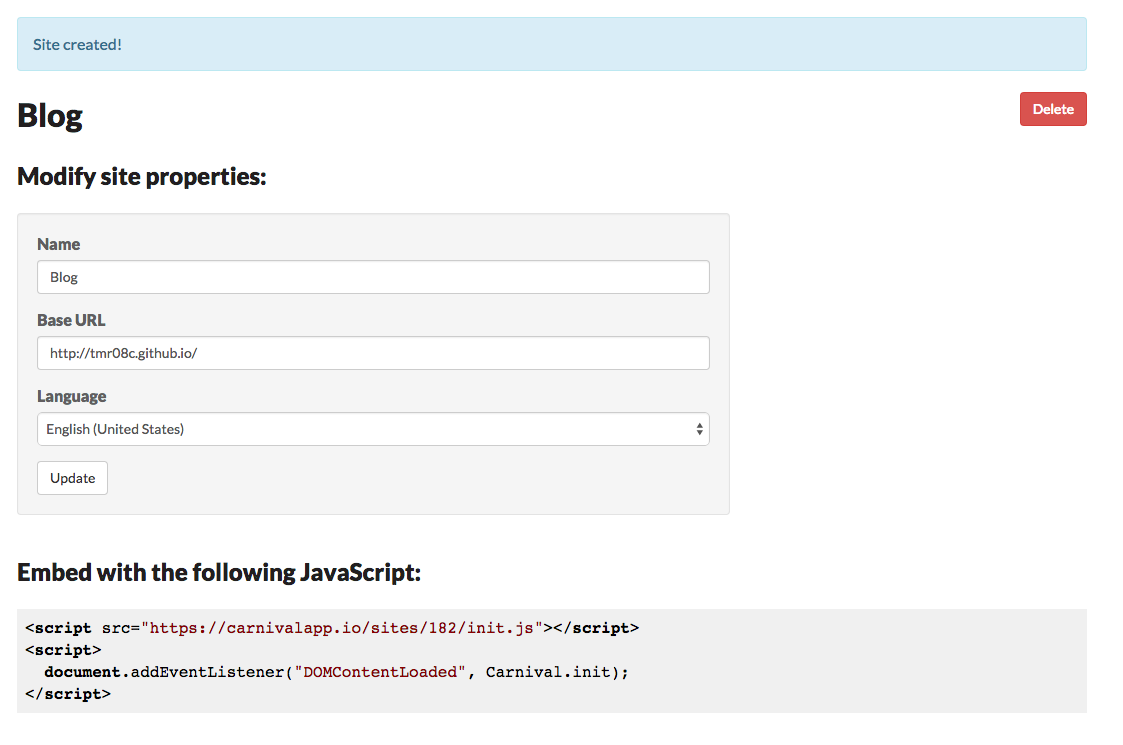Adding Carnival Comments to a Jekyll Blog
Table of Contents
Update April 2019 The carnival repository has been archived and the site fails to load, so it looks like the service is no longer being supported.
Original Post
I have mentioned before that I have been listening to thoughtbot’s podcasts a lot lately. One of the shows, The Bike Shed, recently had a few episodes in which they discussed the functional language, Haskell, including an episode in which thoughtbotter Pat Brisbin discussed how he was using Haskell at work to create a commenting system for their training program, Upcase.
This commenting system is known as Carnival. It is very similar to the commenting system that Medium has - you have the ability to comment on individual sections rather than having all comments at the bottom. This style of commenting seems like it could be very beneficial to me; both for readers and writers.
- It makes it much easier for everyone to know the context of the comment - you know exactly which section someone is referencing with their comment
- It keeps discussions grouped together - often times it seems comments will have big threads discussing different aspects at various points in the history, with this format the comment groups will stick to their own areas and not be surrounded by unrelated posts
Since there is a free hosting plan available for non-commercial sites I figured I would see how easy it was to set up with Jekyll.
Signing Up
Signing up for an account is easy as they allow you to use GitHub or Google if you don’t want to create an account.
After signing in with my GitHub account I just had to provide a name for my site, my base URL, and the language in which, presumably, the comments would be created in, then click create.

Setting Up
I was shown a success message and the JavaScript I would need to include on my site.

When I initially set up my blog with Disqus I followed this blog post.
This post recommended creating a comments.html file in the _layouts directory so I can simply append
{% include comments.html %}
to any pages I want comments. Since I want comments on all posts and all posts share a layout I just had to add this snippet to the bottom of my _layouts/posts.html file. You can see the initial setup in this commit.
Since I already had this set up, adding Carnival was simple, I just had to add their provided snippet to my comments layout. Since I decided I wanted to leave Disqus for the time being my comments layout now looked like:
<!-- Carnival Comments -->
<script src="https://carnivalapp.io/sites/182/init.js"></script>
<script>
document.addEventListener("DOMContentLoaded", Carnival.init);
</script>
<!-- Disqus Comments -->
<div id="disqus_thread"></div>
<script type="text/javascript">
/* * * CONFIGURATION VARIABLES * * */
var disqus_shortname = 'troyprogblog';
/* * * DON'T EDIT BELOW THIS LINE * * */
(function() {
var dsq = document.createElement('script'); dsq.type = 'text/javascript'; dsq.async = true;
dsq.src = '//' + disqus_shortname + '.disqus.com/embed.js';
(document.getElementsByTagName('head')[0] || document.getElementsByTagName('body')[0]).appendChild(dsq);
})();
</script>
<noscript>Please enable JavaScript to view the <a href="https://disqus.com/?ref_noscript" rel="nofollow">comments powered by Disqus.</a></noscript>
That’s it! Now I have in-post comments.
Tweaking
I checked a few pages and noticed that comments were not working for code blocks. I looked into the docs and saw an option named block_selector, which is, according to the docs:
The CSS selector used to find elements within the Article on which to add comment Threads. When this selector is used, :scope will refer to your Article element.
The default block selector include :scope > pre. The problem is the > selector expects the pre tag to be the direct child of the article tag and Jekyll wraps the pre tags in a div with a class of highlight.
Luckily Carnvial defaults can be changed in the init by passing in an object containing your preferred options. Which makes our comments code now look like:
document.addEventListener("DOMContentLoaded", function(){
Carnival.init({
block_selector: ':scope > p, :scope li, :scope > .highlight, :scope > blockquote'
});
});
I chose to change :scope > pre to :scope > .highlight but :scope pre also would work.
Since I was tweaking what I could comment on I noticed I had some other uncommentable sections in some of my posts, lists and quotes, so I decided to add these as well.
For lists I decided to allow each item to be comments on via :scope li as opposed to the overall list (something like :scope > ul). Since li’s are children of ul’s simply using scope > li would not have worked as the li is not the direct child of the article.
When using the > markdown tag for quotes, Jekyll will wrap the text in a <blockquote> tag, so adding :scope > blockquote to the block_selector list will allow quotes to be commentable as well.
Now everyone can comment on paragraphs, list items, code blocks, and quotes.
Things to Watch Out For
There are two things to be aware of:
- Commenting locally with be reflected on your blog - since you are pushing your comments to the service testing your comments “locally” will show up on your live blog. If you look at one of my older posts you will see I learned this from experience
- At the time of writing there is no way to delete a comment (see above for how I figured this out). Since Carnival is open source we can see that this is a known issue so I’m sure there will be some solutions soon.
Conclusion
I am happy to get to have Medium-like comments added to my blog so easily. For now I want to leave up both Discqus and Carnival. I can see uses for both, commenting on the overall post versus specific sections, but could see removing one or the other at some point as well.